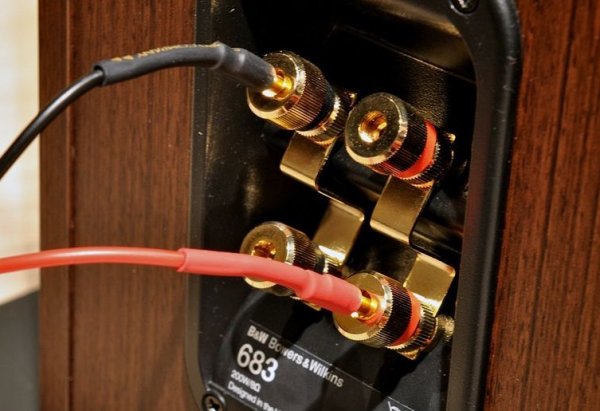Roughly two months away from the year 2020, loudspeaker's manufacturers will still offer two and three pairs of speaker's binding posts. It's inevitable. And I mean many manufacturers, including the best and also the ones with a strong scientific pedigree.
Most speakers (majority by a large margin) offering more than one set of binding posts are the passive type (crossovers). It is in this general aspect that I'm most interested in the discussion, but I do welcome pushing the envelope over the boundaries (active separate crossovers) as it benefits our knowledge advancement, to all.
Are most manufacturers offering them so that they can satisfy audio cable manufacturers, or are the speaker's manufacturers have a solid reason to offer them for the benefits on sound quality that they observed and measured? Also, if you bi-amplified them it's good for amplifer's manufacturers.
Some of the members here have loudspeakers larger than their stainless steel refrigerators (double doors). Yet those fridges (from my knowledge) offer only one set of AC power cord. This is slight humor in just case.
Anyway, here are two short links; the first a short blog discussion on Bi-wiring, and the second a short article on the same subject. My main interest here is Bi-Wiring, but it's impossible to not also include Bi-Amping, so both options are certainly welcome in the discussion @ the edge of the year 2020.
Also, as I've already said above; my main emphasis is on passive x-overs, but I sure won't object from further learnings on active x-overs. I said "main emphasis" because most speakers are from the passive x-over types.
And active speakers, with their own internal separate amps for the low and high frequencies are specifically build with active crossovers. Am I right in that assessment, or it varies?
_____
? https://www.stereophile.com/content/biwiring-1
? https://www.qacoustics.co.uk/blog/2016/06/08/bi-wiring-speakers-exploration-benefits/
In search (exploration) to higher grounds ...
Most speakers (majority by a large margin) offering more than one set of binding posts are the passive type (crossovers). It is in this general aspect that I'm most interested in the discussion, but I do welcome pushing the envelope over the boundaries (active separate crossovers) as it benefits our knowledge advancement, to all.
Are most manufacturers offering them so that they can satisfy audio cable manufacturers, or are the speaker's manufacturers have a solid reason to offer them for the benefits on sound quality that they observed and measured? Also, if you bi-amplified them it's good for amplifer's manufacturers.
Some of the members here have loudspeakers larger than their stainless steel refrigerators (double doors). Yet those fridges (from my knowledge) offer only one set of AC power cord. This is slight humor in just case.
Anyway, here are two short links; the first a short blog discussion on Bi-wiring, and the second a short article on the same subject. My main interest here is Bi-Wiring, but it's impossible to not also include Bi-Amping, so both options are certainly welcome in the discussion @ the edge of the year 2020.
Also, as I've already said above; my main emphasis is on passive x-overs, but I sure won't object from further learnings on active x-overs. I said "main emphasis" because most speakers are from the passive x-over types.
And active speakers, with their own internal separate amps for the low and high frequencies are specifically build with active crossovers. Am I right in that assessment, or it varies?
_____
? https://www.stereophile.com/content/biwiring-1
? https://www.qacoustics.co.uk/blog/2016/06/08/bi-wiring-speakers-exploration-benefits/
In search (exploration) to higher grounds ...










